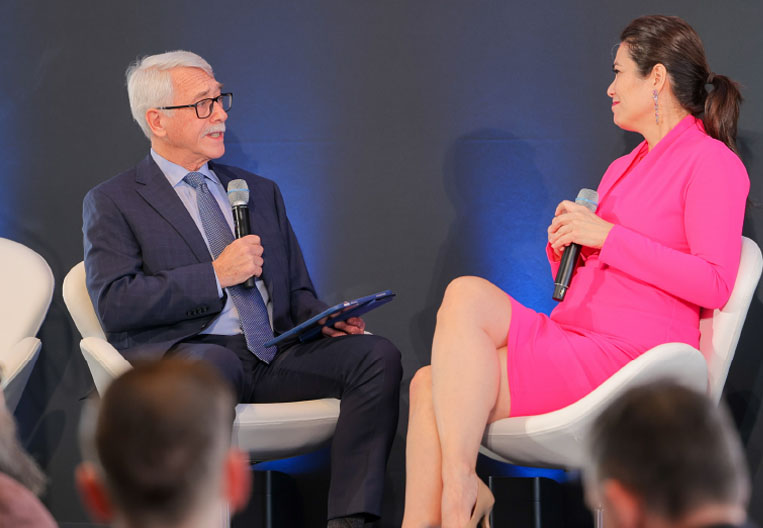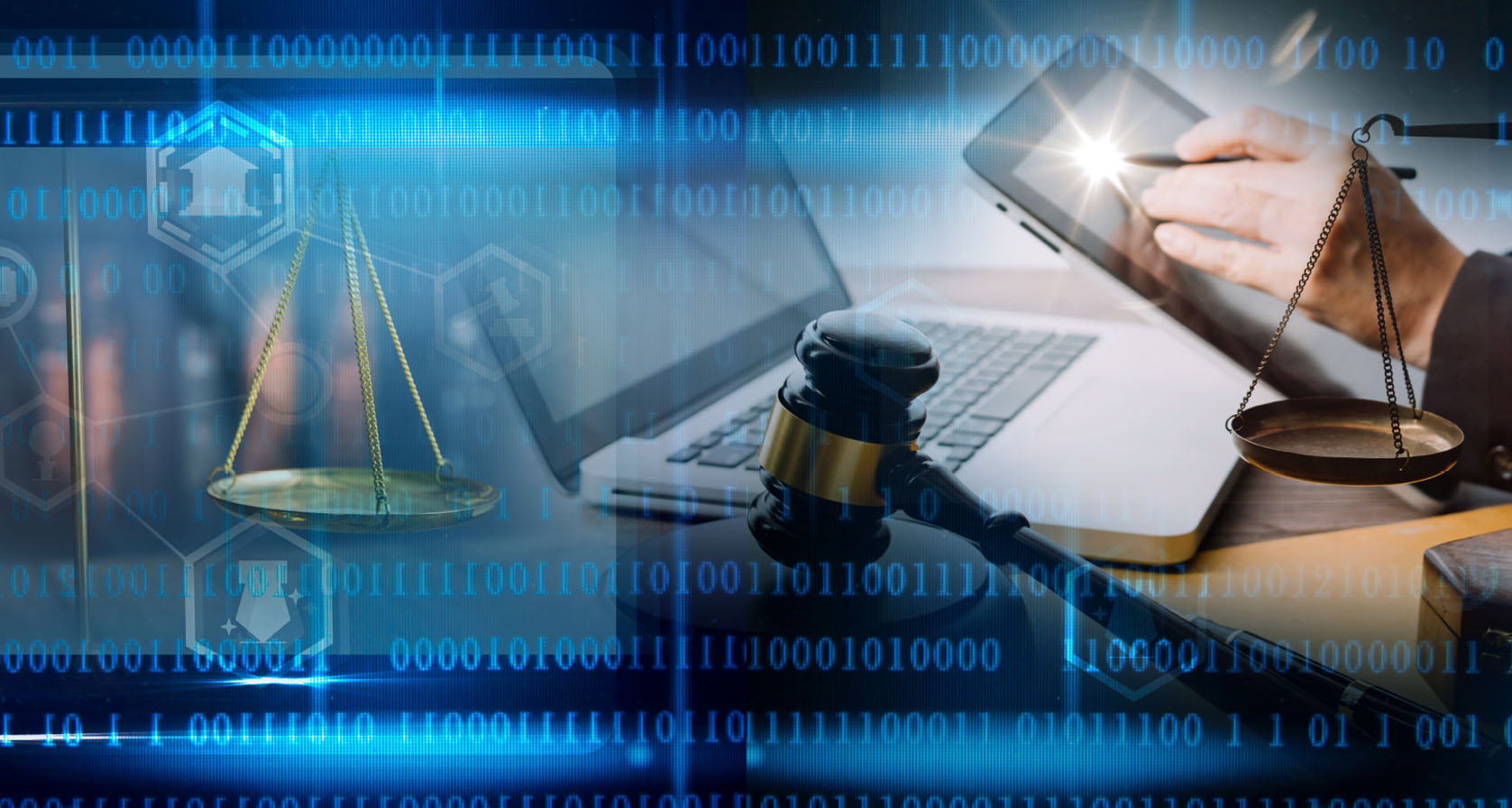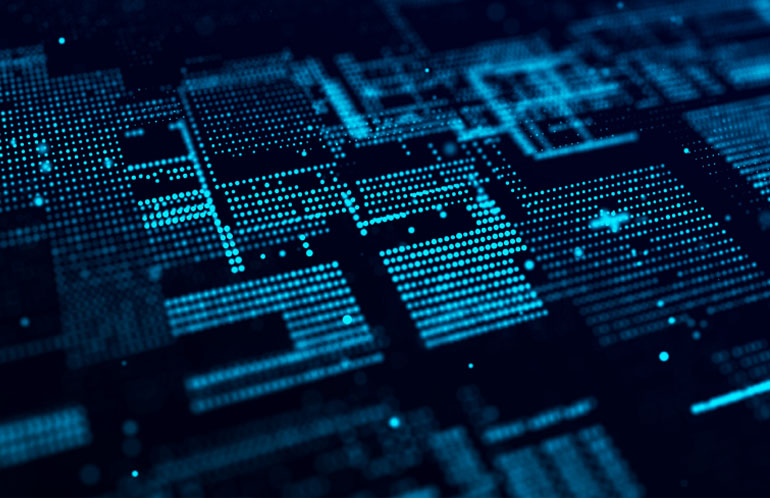
Leveraging IT to Enhance Mission Operations
Insights from Melinda Rogers, Chief Information Officer, U.S. Department of Justice
By Michael J. Keegan
Technology and information management are key enablers helping U.S. government agencies to meet their varied missions. As the boundaries of technology continue to be pushed, it is imperative that technology services enable agencies to navigate effectively the dynamic pace of technological change and data proliferation. In an era marked by rapid technological advancement and increasing cybersecurity threats, the role of chief information officers (CIOs) has evolved significantly.
Melinda Rogers, the CIO at the U.S. Department of Justice (DOJ), illustrates this shift, focusing on strategic IT modernization, cybersecurity enhancement, and the adoption of emerging technologies. She joined me on The Business of Government Hour to provide valuable insights into the department’s IT strategy and painted a comprehensive picture of the department’s IT landscape. The following is a summary of our discussion, complemented by additional research.
The Role of IT at the Department of Justice
Rogers begins by describing the mission of the Office of the Chief Information Officer (OCIO) at DOJ, which is to deliver innovative, secure, and high-quality IT capabilities that enable the department to uphold the law and public safety. In line with this mission, Rogers emphasizes the significance of providing technological tools that support DOJ employees in performing their duties faster and smarter.
“The mission of the OCIO,” explains Rogers, “is to support the department and its components by providing technology solutions and services that enable our people to carry out their roles and responsibilities effectively.” A notable aspect of her approach is the careful balance she maintains between optimizing IT services and ensuring that cybersecurity measures are robust enough to protect the sensitive information DOJ handles. “We focus on ensuring that our IT infrastructure and services are not just reliable, but that they truly enable the mission-critical operations of the department, whether it’s in law enforcement, litigation, or administrative functions,” she emphasized.

Her office is organized around three core components: service delivery, cybersecurity, and policy and planning. This tripartite structure allows the department to not only maintain operational efficiency but also ensure IT security, manage resources effectively, and provide mission-enabling technologies. The analogy of a “three-legged stool” used by Rogers highlights how these divisions are interconnected and essential for the successful execution of the department’s wide-ranging responsibilities, which include law enforcement, civil rights, and national security.
Management Challenges
Rogers identifies funding, major incidents, and people as some of the top management challenges. Each presents unique hurdles, but they also offer insight into the complexities of managing IT at a large federal agency.
1. Funding constraints: The ongoing challenge of securing sufficient resources for critical IT and cybersecurity initiatives is at the forefront of Rogers’ concerns. As she explains, educating stakeholders and policymakers about the intricate and interconnected nature of IT security and modernization is essential to obtaining the necessary budget. The scale and mission of the DOJ require significant investment in IT, which must constantly evolve to safeguard national security and sensitive data.

2. Major incidents: With an understanding that cyber incidents are inevitable, Rogers focuses on the need for a robust response plan. Her approach emphasizes the importance of having playbooks ready for immediate response, isolation of threats, and the remediation of issues, followed by thorough lessons-learned processes to prevent future breaches. This proactive and comprehensive response is vital to ensuring that the DOJ can recover quickly from any attack or disruption.
3. People: Retaining and motivating a talented workforce remains a priority for Rogers. She acknowledges the critical role that people play in driving IT innovation and maintaining security, yet financial constraints often pose challenges to retaining top talent. Her leadership philosophy underscores the importance of clear communication, ensuring that team members understand how their work contributes to the organization’s overall success. Rogers also emphasizes the need to provide constructive feedback and mentorship, recognizing that motivation is often driven by feeling appreciated and seen for one’s efforts.
IT Strategic Vision
“My vision,” Rogers describes, “is to create a unified IT strategy that aligns technology investments with the department’s mission priorities, ensuring that all components have the technology they need to carry out their work effectively.” Her strategic vision for DOJ IT is grounded in five core pillars that collectively aim to deliver exceptional technology services while transforming the workforce to adapt to accelerating technological change.
1. Enhancing service delivery: Central to Rogers’ vision is improving the DOJ’s service delivery to its internal customers, ensuring that IT tools and services help mission staff increase their productivity. This priority centers around establishing a customer-centric culture and improving communication to keep stakeholders informed about IT operations. “I envision a culture of continuous improvement within the OCIO, where we are always looking for opportunities to optimize our systems and processes and stay ahead of evolving threats and challenges,” she says.
2. Elevating cybersecurity: In a time when cybersecurity threats are rapidly evolving, Rogers prioritizes positioning the DOJ as a standard of excellence in cybersecurity. The department focuses on reinforcing its cybersecurity foundation, implementing zero-trust principles, enhancing cloud security, and managing IT supply chain risks. “We are continuously evaluating our security posture,” Rogers notes, “adopting advanced technologies, and refining our strategies to safeguard our systems and data. Given the nature of the mission and the sensitivity of the information we protect, we must stay ahead of evolving threats.”
3. Expanding innovation: Rogers is keen on encouraging collaboration and removing barriers to technology adoption with inthe DOJ. Her goal is to leverage new technologies to support DOJ’s law enforcement and mission operations, ensuring that the department stays at the forefront of technological advancements. “We want to leverage innovative technologies,” she underscores, “to drive mission outcomes, enhance operational efficiencies, and enable our workforce to work smarter and more securely.”>
“My vision is to create a unified IT strategy that aligns technology investments with the department’s mission priorities, ensuring that all components have the technology they need to carry out their work effectively.”
Melinda Rogers, CIO, U.S. Department of Justice

4. Advancing the workforce: Recognizing the rapid pace of technological change, Rogers emphasizes the importance of having a diverse and well-trained workforce. This priority focuses on continuously enhancing recruitment and retention strategies while providing opportunities for current staff to upskill in response to evolving IT demands. “We need to invest in upskilling our workforce,” says Rogers, “so that they can effectively leverage emerging technologies. It’s not just about bringing in new talent but also ensuring that our current employees have the skills and tools they need to succeed in a modern IT environment.”
5. Increasing financial transparency: Lastly, Rogers stresses the need for financial transparency in IT spending. With IT becoming ubiquitous in every aspect of DOJ’s operations, it is crucial to implement effective financial management practices that maximize the value of technology investments while identifying opportunities for cost optimization.
IT Governance and the Importance of Communication
One of the key themes Rogers emphasized during the conversation was the ongoing challenge and opportunity of managing IT governance across the DOJ’s federated model. With fluctuating funding and evolving mission requirements, Rogers underscores the critical need for consistent communication and collaboration. She notes that regular meetings with the CIOs of the department’s largest components have been instrumental in maintaining oversight and driving cohesive governance. These meetings, which have been going on for some time, are a cornerstone of the department’s governance structure. “These sessions are vital for us to share information, address challenges, and align our technology initiatives,” acknowledges Rogers. “It’s a collaborative approach that allows us to ensure that the solutions we implement are not only strategic but also meet the operational needs of each component.”
Despite the large and complex nature of DOJ’s IT infrastructure, Rogers highlights the importance of leveraging each component’s strengths and shared learnings. This federated approach enables the department to maintain a dynamic and responsive IT governance framework, while still allowing individual offices to retain some autonomy. This governance system, supported by a structured process for capital planning and IT procurement reviews, ensures that the department can align its technological resources with long-term mission needs.
Data as a Strategic Asset
Rogers also provides insight into how the DOJ is transforming data into a strategic asset. “We continue to prioritize our data as a strategic asset around which we build systems and services,” explains Rogers. With the implementation of a comprehensive data strategy, the department is optimizing its data assets to enhance decision making, encourage openness, and drive better outcomes. According to Rogers, it’s not just about collecting data, but about using it in a way that supports decision making, enhances transparency, and improves our overall efficiency. The strategy builds on several federal mandates, including the President’s Management Agenda and the Federal Data Strategy, aiming to foster a data-driven culture across the DOJ. “The long-term objective of the strategy,” admits Rogers, “remains to optimize the value of DOJ data assets for use in our missions.”
The department’s incremental and iterative approach to data capabilities allows it to continuously improve its data management and analytics tools. Timely access to reliable data is essential for the successful execution of DOJ’s missions, and Rogers is keenly aware of the importance of data governance in enhancing decision-making processes. This approach aligns with broader federal efforts, such as the Foundations for Evidence-Based Policymaking Act, reinforcing DOJ’s commitment to leveraging data to meet its objectives efficiently.
Emerging Technologies and Automation
In line with the broader government push to adopt emerging technologies, the DOJ has also been exploring the potential of robotic process automation (RPA) and other innovations. Rogers highlights that RPA has already been employed to automate various business processes, particularly in integrating legacy systems and optimizing workflows. “We have been leveraging the benefits of RPA for some time now,” notes Rogers. “We use it in automating business processes, especially when dealing with integrating processes and data between disparate legacy systems.” This automation has allowed the DOJ to streamline operations without the need for massive investments in new systems.
Rogers also emphasizes the importance of assessing emerging technologies based on their readiness and their ability to solve clearly defined business problems. Rather than pursuing every new technology that appears, the department takes a deliberate approach to determine whether a particular innovation is suitable for its needs. This disciplined focus on problemsolving ensures that emerging technologies are adopted only when they can provide real value.
Addressing IT Skills Gaps and Retention
In discussing workforce development, Rogers offered a candid view of the challenges involved in recruiting and retaining IT talent in a highly competitive environment. Particularly in the Washington, D.C. area, the competition for skilled workers is fierce, and the DOJ has had to rely on its mission driven culture to attract and retain talent. Rogers stresses the importance of giving employees opportunities for professional growth, which is key to fostering loyalty and commitment to the organization.
The CIO also addresses the challenge of bridging the gap between technical expertise and leadership. She highlights the need to develop mid-level managers into future leaders, noting that being a good “doer” does not automatically translate into being a good manager or leader. This focus on leadership development is critical to ensuring that the department can cultivate a strong pipeline of future executives who can navigate the complex landscape of public sector IT management.

Leadership Principles and Personal Reflections
When asked about her leadership style, Rogers highlights the importance of leading by example, maintaining integrity, and being adaptable. “Being adaptable and able to pivot quickly is a hallmark of good leadership.” Her emphasis on being direct, providing constructive feedback, and maintaining high standards reflects her deep commitment to both the mission of the DOJ and the people she leads. Moreover, her career path, which zigzagged from banking to consumer goods and finally to federal service, equipped her with a unique perspective that has proven invaluable in her role at DOJ.
In her reflection on leadership, Rogers underscores the importance of continuous improvement and delivering value to the American people, principles that have been central to her career, both in the private sector and at the DOJ. “You have to be a servant leader and really listen to your workforce and understand their needs,” says Roger. “One of the biggest responsibilities is to ensure that we’re providing our workforce with the tools and the resources they need to be successful.”
On the Future
Looking to the future, Rogers laid out several key objectives for the DOJ’s IT strategy. First and foremost, she aims to continue advancing and innovating in ways that directly support the department’s mission. Rogers is particularly focused on ensuring that any new technological initiatives are tied to solving specific business problems, rather than being pursued simply because they are new or trendy.
Additionally, she plans to prioritize the optimization of the DOJ’s infrastructure, applications, and platforms, ensuring they are aligned with mission operations. Workforce development will also remain a critical focus, with an emphasis on taking care of the people who drive the department’s technological capabilities. Finally, Rogers is committed to increasing financial transparency and ensuring that taxpayer dollars are spent wisely and efficiently

Conclusion
Melinda Rogers’s IT strategy paints a picture of a department committed to leveraging technology as a force multiplier for its mission. By focusing on modernization, cybersecurity, workforce enablement, and data-driven decision making, DOJ is building a resilient and agile IT ecosystem that can support its operational needs today and into the future. Her insights provide a valuable blueprint for navigating the complexities of IT leadership in the public sector, where the stakes are as high as the mission is critical.
Resources
To learn more about the U.S. Department of Justice, go to justice.gov.
To hear the interviews from The Business of Government Hour, go to businessofgovernment.org/interviews.
To download, listen, and subscribe to the show, go to Apple Podcast, Spotify or Audible.
To view excerpts of the show, go to youtube.com/businessofgovernment.